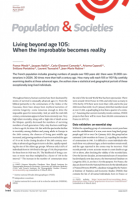
Naissance des sciences de la population
Les savants du royaume de Suède au XVIIIe siècle
Collection : Classiques de l’Économie et de la population
2017, 400 pages[The birth of population science: scientific scholars in the kingdom of Sweden in the eighteenth century, Pehr Willem Wargentin et al.]
Contents
Preface, Peter Sköld
Editors’ note
Nathalie Le Bouteillec and Jean-Marc Rohrbasser
Part I. The Age of Liberty, the time of the pioneers
1. A virtuous economy. The economic context in Sweden at the time of the Tabellverket, Lief Runefelte
2. Inception of the Tabellverket, Nathalie Le Bouteillec
3. The birth of population science in Sweden, Jean-Marc Rohrbasser
Part II. Papers by Pehr Wargentin
I. From 1754 to 1755
II. The 7 papers written from 1767 to 1782
Part III. Other writings published by the Royal Swedish Academy of Sciences, 1743-1779
Pehr Elvius, Jacob Faggot, Gustaf Hedin, Peter Hjelm, Abraham Hülphers, Peter Högström, Elias Lagus, Carl Fredric Mennander, Pehr Osbeck, Edvard Fredric Runeberg, Erik Salander, Olof Strandberg, Jacob Turdfjäll and others
Biographical sketches of the main scholars









